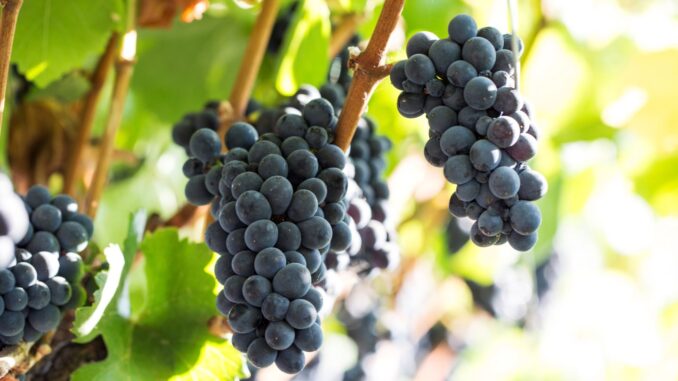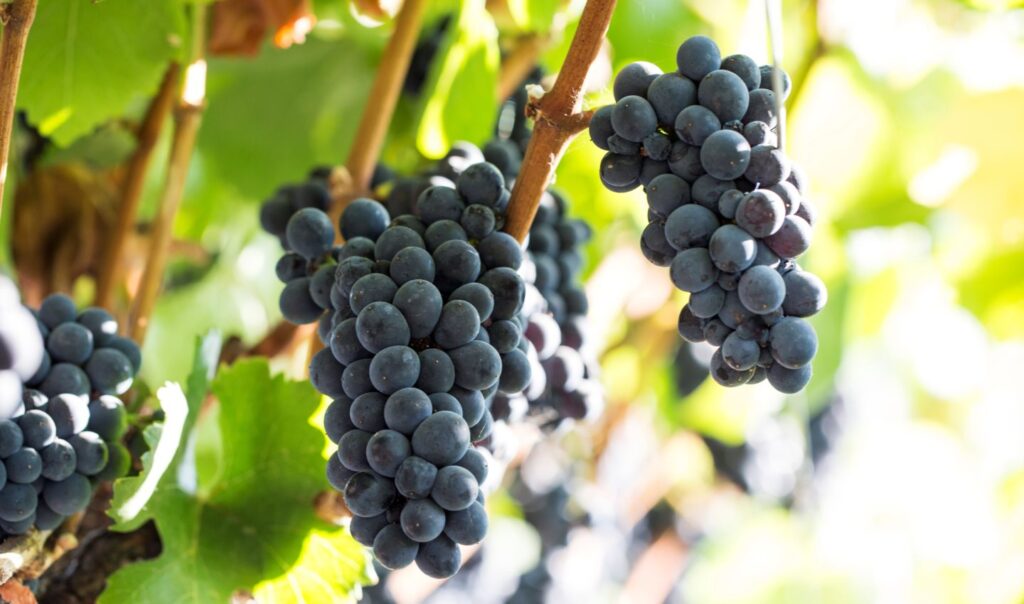
Pinot Noir makes the greatest wines in the world. Tantalisingly, frustratingly, it also makes second-rate wines as well. In addition, wines made from this grape are moody – they can be sensational one day, and a few months later they can refuse to sing. It is the grape responsible for all great red burgundy, as well as being one of the 3 grapes used to make Champagne.

The wines are pale and light in colour because the grapes themselves are thin-skinned, and the colouring matter comes entirely from the skins (the juice is clear – as an illustration, most champagne contains Pinot Noir as part of the blend), so some drinkers will never get on with the wines because they’re after something more assertive, and, I would say, more obvious.
Pinot Noir is suited to cool climates – if the weather is too warm and sunny, blunt, dull, jammy wines result, which lack finesse and excitement, and it is the excitement in the best Pinot Noirs that leaves tasters gasping, speechless. To cite some examples of wine drinkers who have appeared in print on the subject of Pinot Noir:
Jancis Robinson’s Oxford Companion to Wine – “It is a tribute to the unparalleled level of physical excitement generated by tasting one of Burgundy’s better reds that such a high proportion of the world’s most ambitious wine producers want to try their hand with this capricious and extremely variable vine.”
Maurice Healy in his book Stay me with flagons – “This was nearly twenty years ago; but I still remember the magnificent shock of that bouquet, rich in mellow perfection, and entirely free from the infirmities of age. I took one sip; I closed my eyes, and every beautiful thing that I had ever known crowded into my memory. In the old fairy tales the prince drinks a magic potion, or looks into a magic crystal, and all the secrets of the earth are revealed to him. I have experienced that miracle. The song of armies sweeping into battle, the roar of the waves upon a rocky shore, the glint of sunshine after rain on the leaves of a forest, the depths of the church organ, the voices of children singing hymns, all these and a hundred other things seemed to be blended into one magnificence.” He goes on to say, “I, a devotee of Bordeaux [claret], solemnly declare that the three greatest bottles I have ever tasted were all from Burgundy.”
Anthony Hanson in the first edition of his book Burgundy – “A fine wine will have a lovely colour, attractive bouquet, and the balance, flavour and smoothness to be expected of it. A great wine will have all these things, but in addition something to make the pulse race, to make one exclaim: ‘How can it smell and taste like that? That is amazing!’ A fine wine may remind one of flowers or spices or fruits, but there is something animal, often something erotic about great Burgundy.”

So far, we have talked in general terms about how wonderful the Pinot Noir grape is, but what does it taste like? It is one of the charms of this grape variety that it is very difficult to pin down – if you’re a control freak, Pinot Noir is not for you, it is too unpredictable. Stick to claret and avoid red burgundy. The grapes for claret, Cabernet Sauvignon and Merlot (and others) will produce wines where you can be reliably sure of what you’re getting. This is the fashion these days – part of “value for money” is reckoned to be the avoidance of disappointment. With Pinot Noir you will probably meet some disappointments, but the high points (see last month’s article) make any number of disappointments worth it.
Before you taste it is always worth smelling wines, and the smell of good Pinot Noir is a major component of the pleasure of drinking it – the smell is so wonderful that I could live in it. Michael Broadbent in the first edition of his Great Vintage Wine Book has a go at describing it: “The Pinot aroma and flavour is hard to describe. Mint has a mint-like smell, garlic is garlic, Pinot is Pinot – more root-like in character as opposed to the fruit-bush crispness of Cabernet Sauvignon. A lecturer once likened the Pinot aroma to boiled beetroot, and I know what he meant.” Anthony Hanson, in the first edition of his book Burgundy, famously wrote: “Great Burgundy smells of shit.” I know what he meant.
The taste: The Oxford Companion to Wine makes an attempt at description, as follows, “the only characteristics that the Pinot Noirs of the world could be said to share would be a certain sweet fruitiness, and, in general, lower levels of tannins and pigments than the other ‘great’ French red varieties Cabernet Sauvignon and Syrah.” Serena Sutcliffe, in the second edition of her Pocket Guide to the Wines of Burgundy, in the section on TASTING BURGUNDY, writes: “To unlock the flavours and smells of fine burgundy is to attain a hedonist’s nirvana. Trying poor burgundy is a deadening experience ….. All the following flavours have been ascribed to burgundy, more especially to the bouquet of fine bottles – they are not fanciful, just an attempt to pinpoint those heady, sensual aromas which assail the lucky drinker of good burgundy:
Cherries, Raspberries, Strawberries, Redcurrants, Cassis Figs, Prunes, Plums, Greengages … Loganberries, Black berries …. Vanilla, Cinnamon ….. Liquorice, Laurel, Truffles, Chocolate, Tar …. Roses, Violets …. Wet fur, Wet leaves, Farmyards, Leather, Cocoa ….. Hung game …..”
Pinot Noir is now produced around the world, with good examples in particular coming from New Zealand, USA, Chile, though the home of Pinot Noir is still Burgundy
